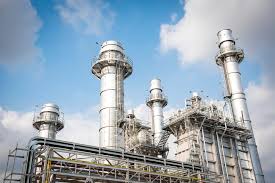· Brian Horton · Markets · 4 min read
U.S. Gas-Fired Power Boom: What It Means for Consumers, LNG Exporters, and Global Energy Markets
The U.S. is leading the world with nearly 100,000 MW of gas-fired power projects. Discover how this surge affects consumers, LNG exporters, and global energy markets — and why it matters for the future of energy security.

Introduction: America’s Gas Buildout at a Crossroads
According to a recent article by Reuters, the United States is at the center of a historic energy transformation. With nearly 100,000 megawatts of new gas-fired power projects under development—more than six times last year’s pipeline—America now leads the world in expanding natural gas capacity. This surge reflects both the growing pressure to stabilize the power grid and the nation’s evolving role as a global energy supplier. While the buildout promises short-term stability and lower volatility in electricity prices, it also carries long-term risks for LNG exporters and global market balance.
Why Gas-Fired Power Is Surging
Electricity demand in the United States has surged, driven heavily by artificial intelligence, cloud computing, and data center growth. These power-hungry technologies require constant and reliable energy, which makes natural gas an attractive option compared to intermittent renewable sources. At the same time, fossil fuel-friendly policies under the Trump administration have removed barriers to new gas development, making it easier for utilities to push ahead with large-scale projects. The appeal lies not only in cost but also in the reliability of gas-fired generation, which continues to play a critical role in grid stability.
Impact on Consumers: Energy Prices and Reliability
For American households and businesses, the gas buildout offers an immediate benefit: more reliable and affordable electricity. Consumers can expect near-term stability in energy costs as utilities bring new capacity online. Yet this picture is not without risk. As power plants compete with LNG exporters for access to natural gas, upward pressure on prices could eventually reach the retail market. Even small increases in gas costs ripple into higher electricity bills. The trade-off is clear—grid reliability today may come with the possibility of higher household costs tomorrow.
Impact on LNG Exporters: A Competitive Squeeze
While domestic utilities welcome new capacity, LNG exporters are watching with concern. The U.S. has built its position as the world’s leading LNG supplier on the foundation of low-cost feedstock. If rising domestic demand begins to drive up prices, that advantage could erode. Buyers in Europe and Asia who rely on competitively priced U.S. LNG may turn to other producers such as Qatar or Australia if contracts become less attractive. Export infrastructure, already capital-intensive and long-term in scope, may face headwinds if confidence in U.S. supply begins to weaken.
Impact on Global Energy Markets
The ripple effects of America’s gas boom extend well beyond U.S. borders. Europe, which has leaned heavily on American LNG since the Russian invasion of Ukraine, could once again face supply risks if U.S. exporters struggle to meet international demand. In Asia, where China and India are rapidly expanding their LNG imports, any slowdown in U.S. export growth would open the door for competitors to strengthen their foothold. Adding to this uncertainty is the long-term production outlook. The U.S. Energy Information Administration projects that natural gas output will peak in the early 2030s before plateauing through mid-century, raising concerns about supply security just as demand climbs globally.
Winners and Losers in the Gas Boom
The clear winners in this expansion are domestic utilities and technology companies that rely on reliable baseload power. Consumers benefit too, at least in the short term, as new projects stabilize electricity prices and strengthen grid resilience. On the other side, LNG exporters face mounting challenges in maintaining their global competitiveness, while international buyers may begin to question the reliability of U.S. supply. Renewable energy developers, meanwhile, must contend with a revived fossil fuel sector that could slow investment in cleaner alternatives.
Conclusion: The Balancing Act Ahead
The U.S. gas-fired power boom represents both a promise and a warning. It promises stability and growth for domestic energy consumers and industries but warns of potential challenges for LNG exporters and global market dynamics. The nation must walk a careful line, balancing the demand for reliable power at home with its ambitions as a global energy leader. The outcome of this balancing act will determine whether the U.S. can sustain its dual role as both a domestic energy powerhouse and an international LNG exporter.
- U.S. gas-fired power plants
- LNG export tensions
- natural gas demand forecast
- global LNG market